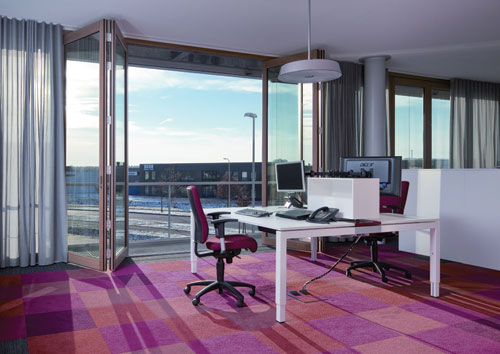Nature and Nurture: The Sustainable Benefits of All-Glass Operable Double-Wall Systems
Other studies by university researchers in both Finland and Germany documented energy savings of up to 12 percent with an average 6 percent savings of the building's energy consumption depending on the orientation and structure.8 Balcony glazing can be used to create a window box solar collector that is engineered to provide air for heat pumps, particularly when located on the south side of a building. The enclosed balcony can also provide passive heating to the adjacent interior space in the cooler seasons of the year.
Durability and Maintenance
There is ongoing maintenance to balconies due to the exposure of the deck to water, frost, salt, bird droppings, leafs, and dust. Over time, balconies in older buildings can show spalling, efflorescence, carbonation, decay and damage. Guardrails may need replacing and what was a clever means to extend the building into the outdoors in the 1960s and 1970s is now a difficult problem for renovations.
A study from Finland researched the effect of balcony glazing on the durability of concrete structures. The researcher studied the advantages of reducing the concrete structure's exposure to moisture. Concrete has a high moisture content that has contributed to the corrosion and disintegration of the structural components of balconies. According to the findings by the researchers, "The efficiency of the moisture protection by the glazing was measured by monitoring the corrosion rate of reinforcement in carbonated concrete sensors which were installed both in glazed and open balconies. The results showed that glazing changes the micro-climate in the balcony so that the hygrothermal conditions turned unfavorable to degradation resulting in remarkable increase in service-life of concrete structures.9 Balcony glazing reduces maintenance and repairs and can add from six to ten years to the structural integrity of the balcony.
Components with a Sustainable Advantage
New all-glass operable wall systems are uniquely engineered for renovations. For easy retrofits into existing and possibly uneven balcony surfaces, compensation channels are part of the window glazing systems. These channels can be adjusted to accommodate settling as a building ages.
An all-glass operable wall system can be integrated into an existing balcony railing or include the guardrail components into the design. The panels are designed for large openings and can be configured in various ways. The panels can be open fully or partially for ventilation. Panels are easy to operate and can be quickly opened or closed.
 |
Even when snow is on the ground, occupants can open up part of the Façade to nature. Photo courtesy of NanaWall Systems Inc. |
Â
Large openings for balcony retrofits can be as high as nine feet and widths range up to just under three feet. Windows can be selected in a variety of sizes. Exterior and interior windows can be segmented, cornerless, open to the middle, from side to side or staggered. Panels can rotate and stack for easy cleaning from the inside even at the upper stories of a building. Wind performance has been tested for up to 40psf and can meet building codes for performance and safety.
To meet green building targets, design professionals may want to select from the following sustainable features from a manufacturer. The windows, particularly on the interior surface of the building should meet or exceed ENERGY STAR requirements for thermal performance. Some systems can be specified with as much as 20 percent recycled content. System selections can include windows with components made from regional materials and Forest Stewardship Council (FSC) products adding green points to certifications such as the USGBC LEED® rating system.









